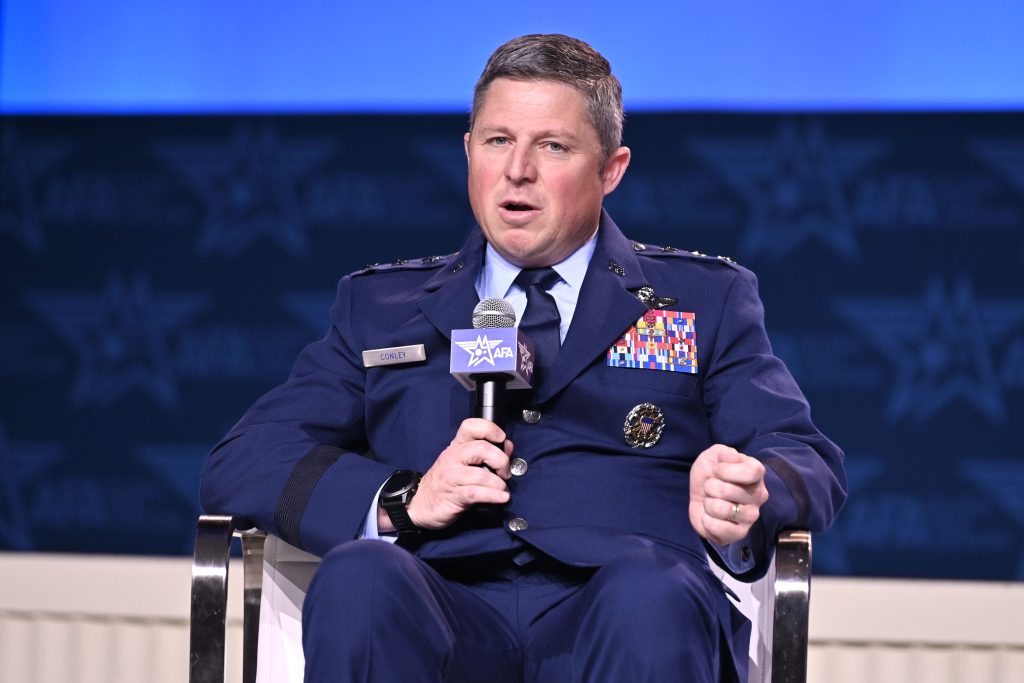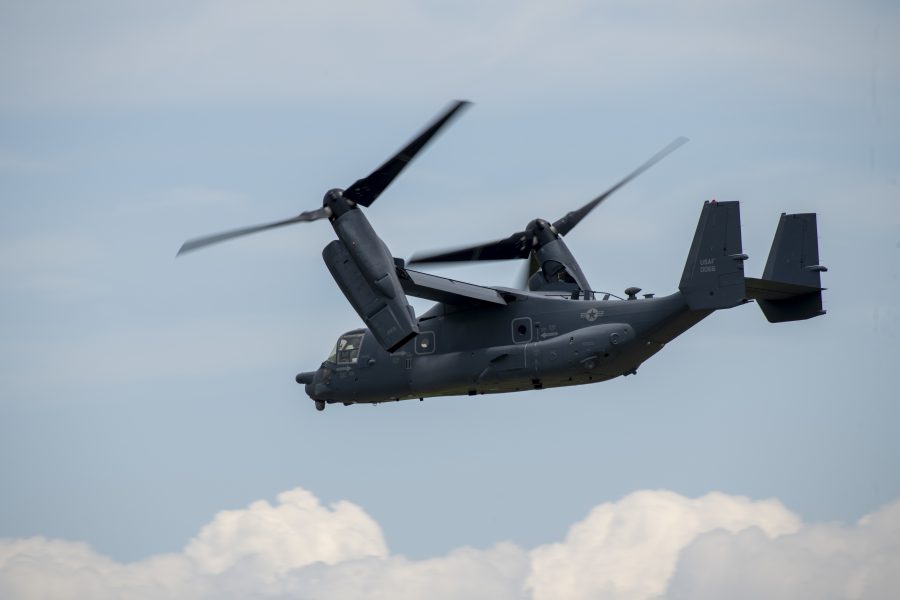NATIONAL HARBOR, Md.—Air Force Special Operations Command will deploy some of its CV-22 Ospreys in the coming weeks after months of limited operations, its commander said Sept. 18. But even when deployed, Ospreys will be required to operate within 30 minutes of a safe landing zone—a factor that will inevitably impact operations and planning.
Speaking with reporters at AFA’s Air, Space & Cyber Conference, Lt. Gen. Michael E. Conley said around 60 percent of the command’s Osprey fleet is flying again, 11 months after a fatal crash in November 2023 triggered a lengthy grounding. Aircraft started flying again in May, following safety restrictions and a slow, phased approach. In July, the Air Force withheld CV-22s from a planned exercise in Japan to focus on “internal training.” Aircraft and crew alike are still working their way back.
“My whole fleet is not operationally ready yet,” Conley said. “But I have enough capacity and the right crews trained to provide capabilities on the battlefield.”
Conley declined to say where the Ospreys would deploy but noted it would not be in Europe or the Indo-Pacific, where AFSOC already has CV-22 wings at RAF Mildenhall, United Kingdom, and Yokota Air Base, Japan.
“We will go back to the missions that only the CV-22 can do, or what the combatant commanders need us to do,” he said.
Conley estimated that all of AFSOC’s 51 CV-22s would return to full flight within the next few months.
“We’re bringing about three [aircraft] every 10 days or so that are ready” for functional check flights, he said. “And so we’re tracking late ’24, early ’25 that the 51 tails in AFSOC will be fully operational.”

But fully operational comes with an asterisk. Conley and a command spokeswoman both said Ospreys must stay within 30 minutes of a spot to land, which they termed “a mission planning issue,” not a flight restriction. Applying that to potential combat zones and hostile territory \will require planning and deconfliction, the spokeswoman said.
New safety procedures now in place advise pilots to land after a second warning about metal fragments in the Osprey gearbox. Previously the standard waited for three warnings before a mandatory landing. The Air Force Accident Investigation Board, headed by Conley, that looked into the November 2023 accident in Japan determined the cause of the fatal crash was a failed gear.
“Our criteria prior was three chip [warnings] was a ‘land as soon as practical,’” Conley said. “We’ve changed that to one, and then two becomes a ‘land as soon as possible.’ At the end of the day, there will always be aircraft commander and crew discretion. It’s the nature of what we do. The environments are unique, depending on where we fly and what we’re doing, but we have tightened up the guidance to try to make it less ambiguous to the crews up there.”
Conley’s timeline for AFSOC’s CV-22s to be fully operational is slightly ahead of the Navy’s schedule for its Ospreys. Vice Adm. Carl Chebi, head of Naval Air Systems Command, told Congress in June that the Osprey would not be cleared for full, unrestricted flight operations until mid-2025.
Chebi has been a “great partner,” Conley said.
The Osprey fleet as a whole has come under intense scrutiny in recent months—the crash in Japan was the fourth deadly V-22 mishap in just over two years across the U.S. military, and lawmakers and family members of troops killed in the accidents have demanded answers.
Conley insisted that AFSOC has taken a deliberate and safety-conscious approach in returning it to flight. “To be blunt about it, I would not put the men and women of AFSOC back on the plane if I wasn’t confident that it could do what we needed it to do,” Conley said.
“As part of my Accident Investigation Board duties, I spent time with families after the report came out, and that’s hard,” he continued. “Those families are still grieving, and I appreciate that. They were all gracious to me and my team as we met and spent time with them. I owe it to the families to make sure that we’re giving [Airmen] the safest aircraft we can. And I wouldn’t put them in harm’s way if I didn’t have confidence in it.”
